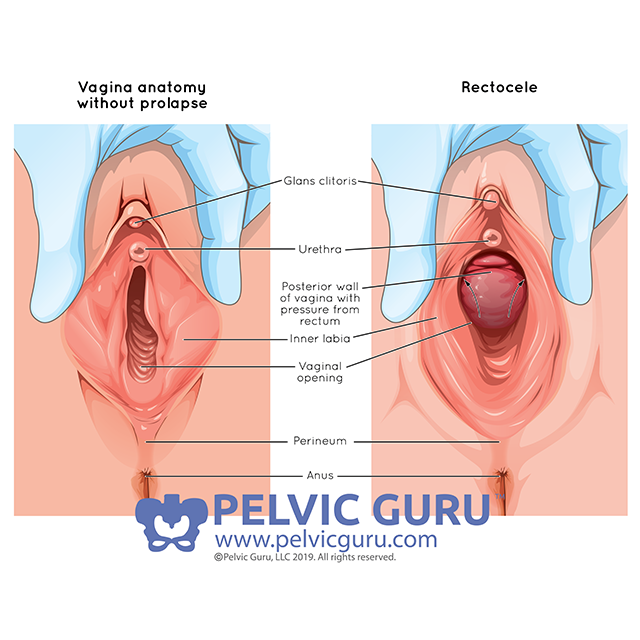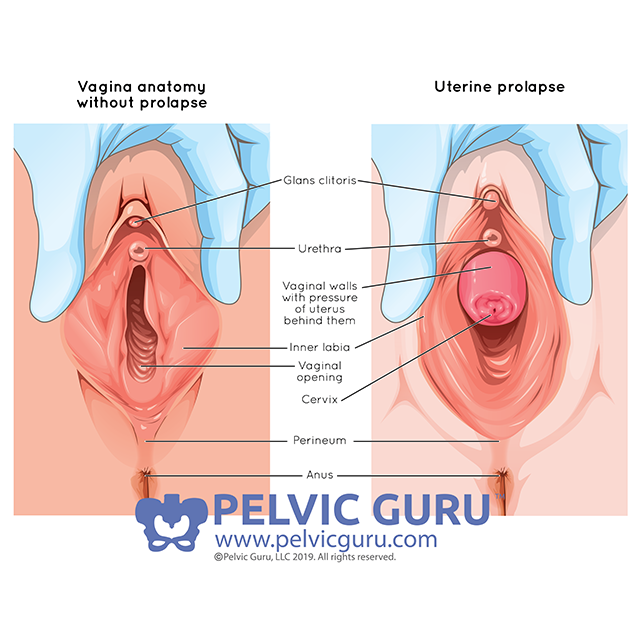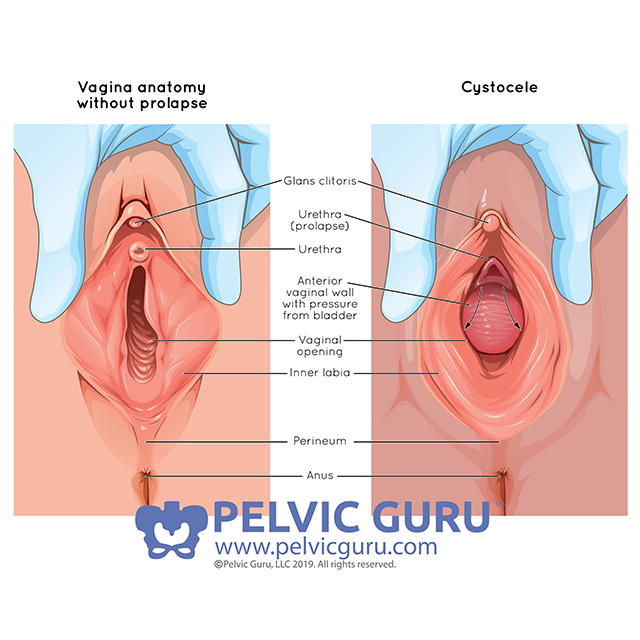Pelvic Organ Prolapse is talked about a ton in the Pelvic PT niche, and it is because it’s a fairly common diagnosis some patients receive after giving birth, but what really is it? A prolapse refers to the descending of organs, in the world of Pelvic PT, it talks about the descend of any pelvic floor organs, through the vaginal canal or anus. These organs can be the bladder, uterus, vagina, small bowel, or rectum!
There are many reasons why Pelvic Organ Prolapse occur, but the common denominator always seems to be when the pressure in the abdomen is just stronger than your pelvic floor or deep core muscles that usually help keep your organs in place, so situations like pregnancy, labor, childbirth, diastasis recti, obesity & many more can be put you at a bit more risk of a Prolapse occurring.
How do you know you have a Pelvic Organ Prolapse?
There are a few symptoms you can be on the lookout for, especially if you have experienced pregnancy, labor, and childbirth, the NHS lists these symptoms as:
- A feeling of heaviness around your lower tummy and genitals
- A dragging discomfort inside your vagina
- Feeling like there’s something coming down into your vagina – it may feel like sitting on a small ball
- Feeling or seeing a bulge or lump in or coming out of your vagina
- Discomfort or numbness during sex
- Problems urinating – such as feeling like your bladder is not emptying fully, needing to go to the toilet more often, or leaking a small amount of pee when you cough, sneeze or exercise (stress incontinence)
Something to keep in mind, though, is that sometimes pelvic organ prolapse can come with no symptoms, and it can be found during an internal examination.
How does a Prolapse happen?
As I mentioned, there are many causes for Prolapse, but some of the things we do can be causing them to worsen, instead of getting better, such as these:
- Improper breathing:
Prolapse feeds off of pressure building up into the pelvic area, and one of the reasons this pressure could increase, or be more noticeable for some is this, improper breathing.
By this I mean, using Upper Chest breathing instead of diaphragmatic breathing, as the diaphragm doesn’t expand in the way it’s meant to, it creates further pressure on the pelvic bowl.
- True core weakness:
One of the main reasons remains any kind of birth trauma, if you had to go with Forceps or Vacuum, that could promote the feeling of downward pressure, along with the lack of diaphragmatic breathing, this can strengthen the pressure.
The main solution for true weakness, is a proper KEGEL Routine, only when prescribed to! The exercises are incredibly helpful and will only give your Pelvic Floor muscles the flexibility and strength it needs to reduce and relieve those incredibly uncomfortable symptoms.
- Scar Tissue around Pelvic Floor Muscles:
If you are a c-section mom like I am, and you are experiencing prolapse symptoms, this could be the cause. What occurs basically is the muscles get locked up by the scar tissue that can grow around the pelvic floor muscles, so the reason you might be experiencing prolapse or prolapse like symptoms might have nothing to do with strength, but it could be something else!
My biggest tip when you go to your very first pelvic exam is to let your Pelvic PT know if you had any kind of surgery before, as this can be the cause of your Prolapse symptoms, or even, other kinds of pelvic floor issues!
Types of Pelvic Organ Prolapse
Let’s go over 3 types:
- Uterine: A prolapse or descending of the uterus.
- Rectal or Rectocele: A prolapse in which the rectum falls forward into the posterior vaginal wall,
- Cystocele: A prolapse where the bladder falls back towards the anterior vaginal wall.
The intensity of each one can vary on the stage they are in, so let’s go over an example of that: How does the Uterine Prolapse occurs depending of each stage:
I called them stages 1 to 4, but the fourth stage is just the most severe presentation of it, called Procidentia, which is when the uterus is completely outside of the introitus and can be seen outside.
But, let’s go over the stages 1 to 3:
- First stage, or first degree: The cervix moves down inside of the vagina. This stage is the lowest one, and through proper exercise prescription and pelvic floor physical therapy, it can me resolved.
- Second stage or degree: the cervix moves through the opening of the vagina with straining, this stage still can be resolved with proper exercises and pelvic floor physical therapy.
- Third stage or degree: the uterus moves out of the vagina, at this stage, there needs to be a multifaceted approach to come up with a plan of action!
In the case of uterine prolapse, research has shown that some women with mild to moderate prolapse, in this case stages 1 or 2, can reduce the symptoms through supervised pelvic floor physical therapy significantly, enough so that they can avoid surgery completely.
However, there is not enough research at the current time to know fully if women with severe prolapse symptoms can reverse them, along with the severity of it through exercises, that means women with prolapse above stage 3, which is why, I always suggest a multifaceted approach, so reach out to your Gynecologist and Pelvic PT, to have a better understanding of your current situation and treatment plan!
What can I do to help lessen my Prolapse symptoms?

First, find a PT to help you and guide you directly with your particular case, however, I can tell you one of my favorite techniques that you can do at home! For Prolapse my techniques are very reliant on relaxing your body and avoiding to the best of your ability creating any extra pressure on your abdomen.
My very first advice is to simply stop holding your breath, and it sounds like the easiest thing in the world. but in reality it might be a bit harder than you realize. The very first thing to do is to simply start realizing the moment you do it, and slowly but surely start breaking the cycle.
The importance of not holding in your breath when doing certain activities like exercising or lifting any kind of weight relies on not creating any extra pressure on your abdomen, which in turn can further aggravate your prolapse.
My next tip is all about taking a deep breath, relaxing your body, expanding your diaphragm in a controlled way and helping you connect with your pelvic floor. Consciously practicing this relaxes your body and takes away any tension you might be experiencing on your pelvic floor!
If you want an explanation on how to do diaphragmatic breathing, I have a video all about it:





Recent Comments